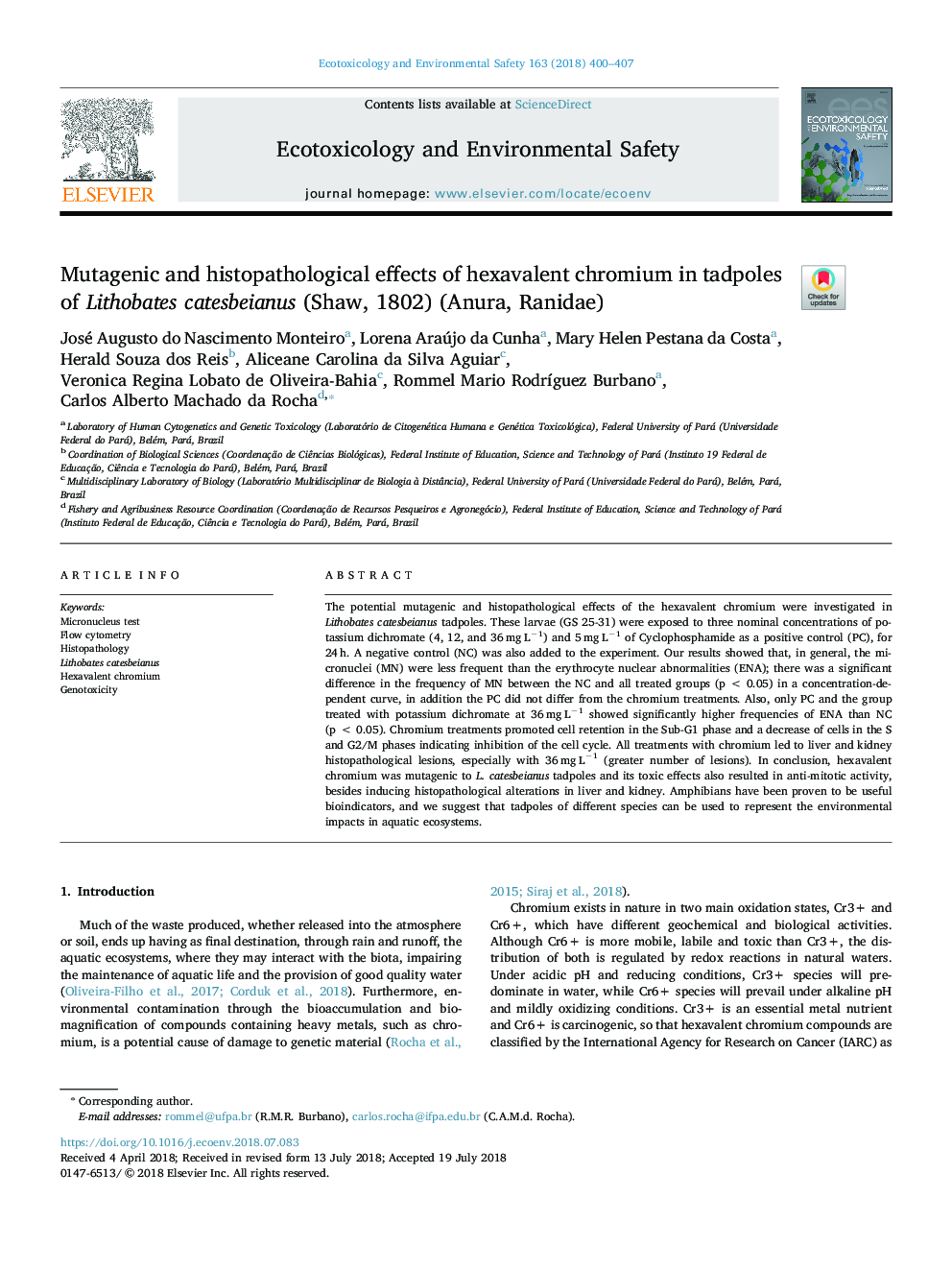| Article ID | Journal | Published Year | Pages | File Type |
|---|---|---|---|---|
| 8853182 | Ecotoxicology and Environmental Safety | 2018 | 8 Pages |
Abstract
The potential mutagenic and histopathological effects of the hexavalent chromium were investigated in Lithobates catesbeianus tadpoles. These larvae (GS 25-31) were exposed to three nominal concentrations of potassium dichromate (4, 12, and 36â¯mgâ¯Lâ1) and 5â¯mgâ¯Lâ1 of Cyclophosphamide as a positive control (PC), for 24â¯h. A negative control (NC) was also added to the experiment. Our results showed that, in general, the micronuclei (MN) were less frequent than the erythrocyte nuclear abnormalities (ENA); there was a significant difference in the frequency of MN between the NC and all treated groups (pâ¯<â¯0.05) in a concentration-dependent curve, in addition the PC did not differ from the chromium treatments. Also, only PC and the group treated with potassium dichromate at 36â¯mgâ¯Lâ1 showed significantly higher frequencies of ENA than NC (pâ¯<â¯0.05). Chromium treatments promoted cell retention in the Sub-G1 phase and a decrease of cells in the S and G2/M phases indicating inhibition of the cell cycle. All treatments with chromium led to liver and kidney histopathological lesions, especially with 36â¯mgâ¯Lâ1 (greater number of lesions). In conclusion, hexavalent chromium was mutagenic to L. catesbeianus tadpoles and its toxic effects also resulted in anti-mitotic activity, besides inducing histopathological alterations in liver and kidney. Amphibians have been proven to be useful bioindicators, and we suggest that tadpoles of different species can be used to represent the environmental impacts in aquatic ecosystems.
Keywords
Related Topics
Life Sciences
Environmental Science
Environmental Chemistry
Authors
José Augusto do Nascimento Monteiro, Lorena Araújo da Cunha, Mary Helen Pestana da Costa, Herald Souza dos Reis, Aliceane Carolina da Silva Aguiar, Veronica Regina Lobato de Oliveira-Bahia, Rommel Mario RodrÃguez Burbano,
